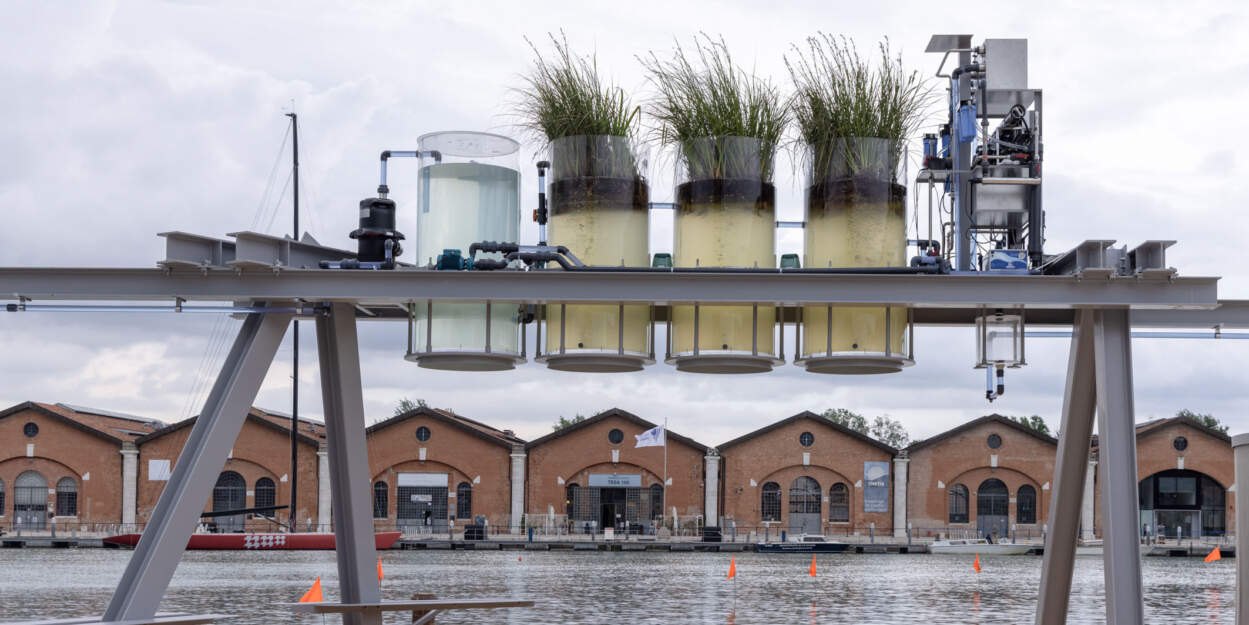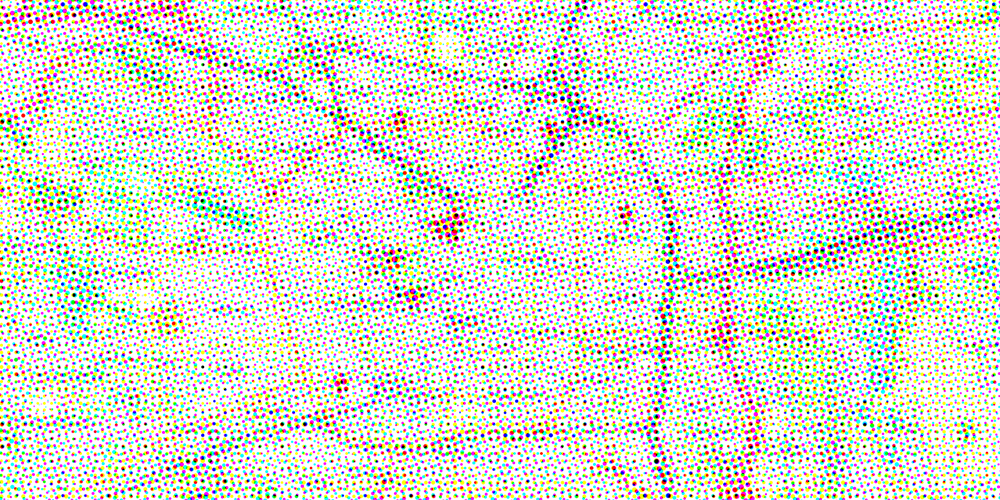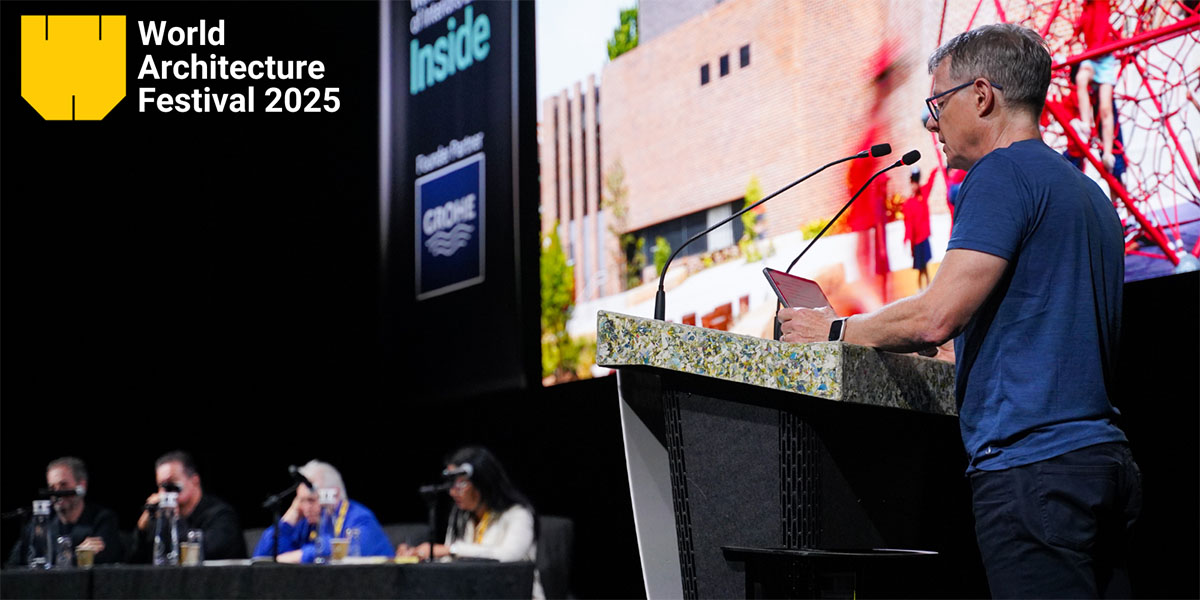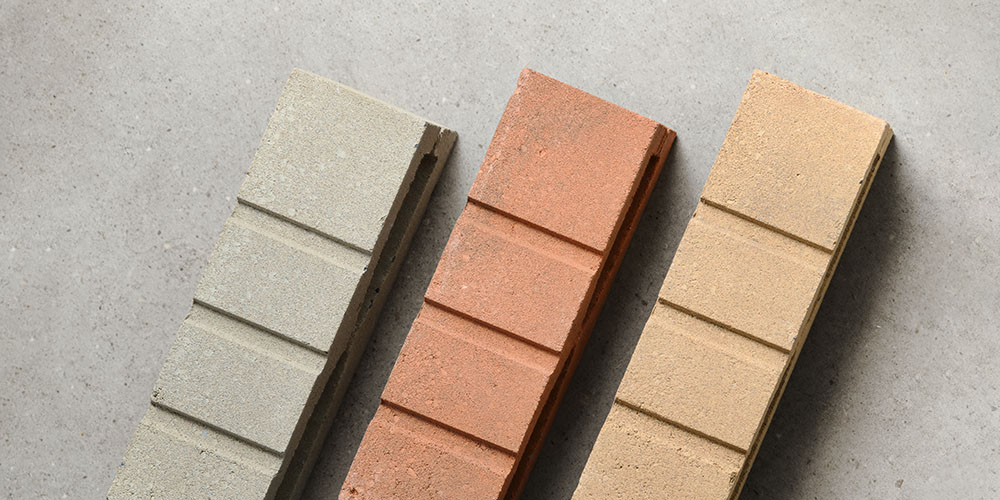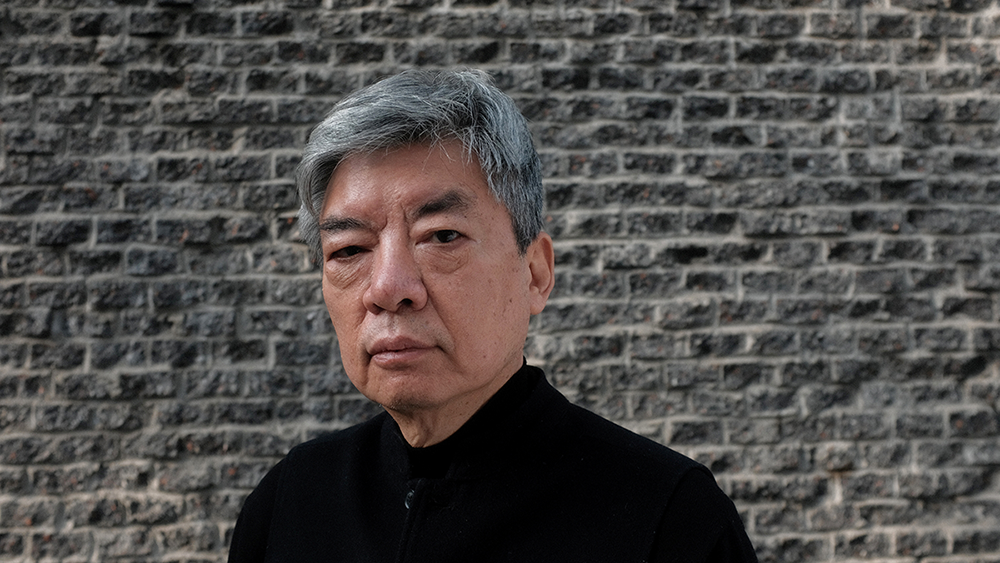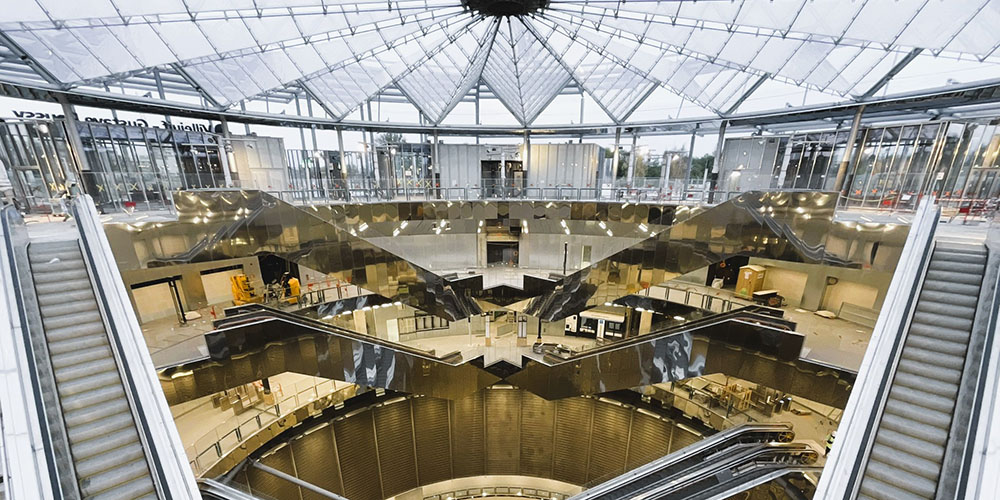As part of the Technopôle Transalley development, the Communauté d’Agglomération and the University of Valenciennes have chosen to build two innovative public programs: the Sustainable Transport Institute (IMTD) and the International Management Institute (IIM).
Transalley is an international technology park in Valenciennes in the Hauts-de-France region of France which unites businesses, research laboratories, and training institutions to innovate in the mobility and sustainable transport sectors.
These two programs will be resolutely focused on the theme of “sustainable transportation” and its inclusion in the society of tomorrow.
The Sustainable Transport and Mobility Institute associated with the International Management Institute acts as the heart of this Technopôle.
The large central square unifies the two glass volumes, including a demonstration and experimentation track linking the IMTD exhibition spaces.
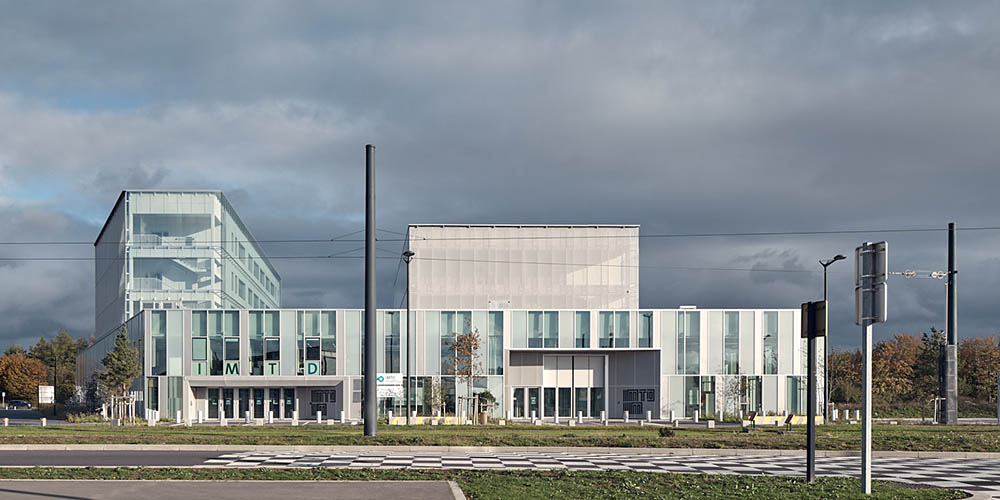
The two institutes are part of the Université Polytechnique des Hauts-de-France’s Innovative Campus.
Located in Valenciennes, in one of the most dynamic regions in terms of automobile, rail, aeronautics and new mobility, the new Technopôle Transalley concrete and glass architecture is intended for students, businesses (hosting an incubator and an accelerator), and also to the general public.
On the same building complex designed by Coldefy, training, research and commercial activities come together around the theme of sustainable transport.
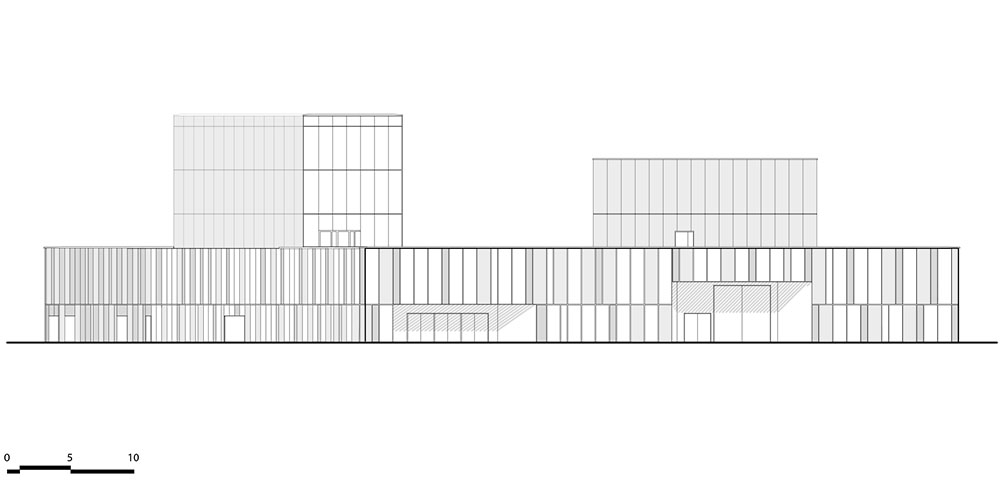
The Sustainable Transport and Mobility Institute and International Management Institute are the nerve centre of the technology park. Linked by the grand central square, which is a garden, they form a single unit.
This garden, which includes a demonstration and experimentation track, creates a strong link with the IMTD exhibition spaces.
The two main volumes are perfectly aligned like a showcase and create a continuous space.
Enveloping the building is a double-skin façade providing acoustic insulation, solar shading in summer and thermal insulation in winter. The gable walls provide night-time illumination, transforming them into lanterns at night.
The various activity hubs within the base of the building are organised in such a way as to create a progression from public spaces to private spaces. Facilities open to the public face the central square.
The public enters via the central exhibition space, showcasing the sustainable transport knowledge and expertise on the campus.
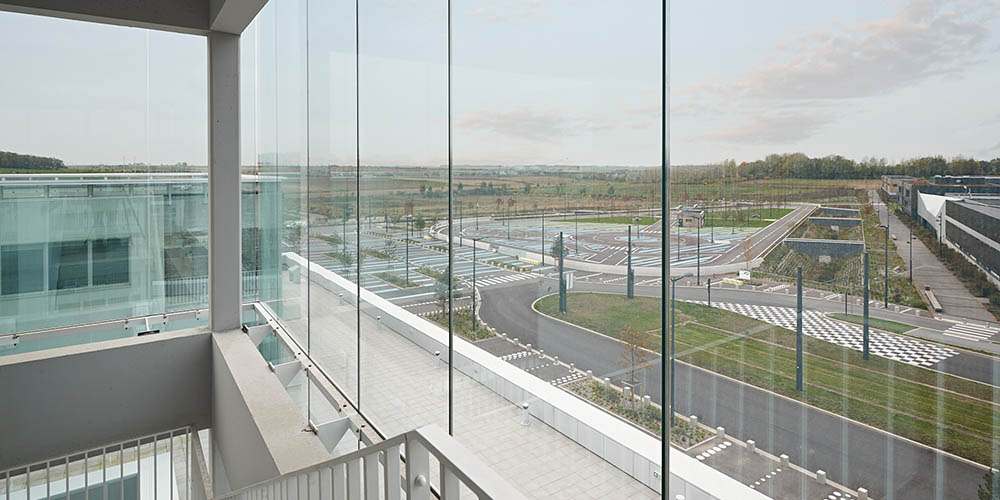
From the emergence hosting the offices of the IIM administration, view on the promenade accessible to the public which is located on the first level, and view as well on the demonstration track dedicated to experimental vehicles, on Loubat avenue.
The showroom’s glass architecture creates a connection with the exterior. The grand conference room directly adjoins the showroom. A moveable partition creates a strong symbiosis between these two areas.
The raked seating in the conference room is also retractable and can be stored along the lateral wall. These retractable features make these two areas incredibly flexible and modular: they can form a single space for a larger exhibition, and large-scale receptions can be held in this room (with the raked seating retracted).
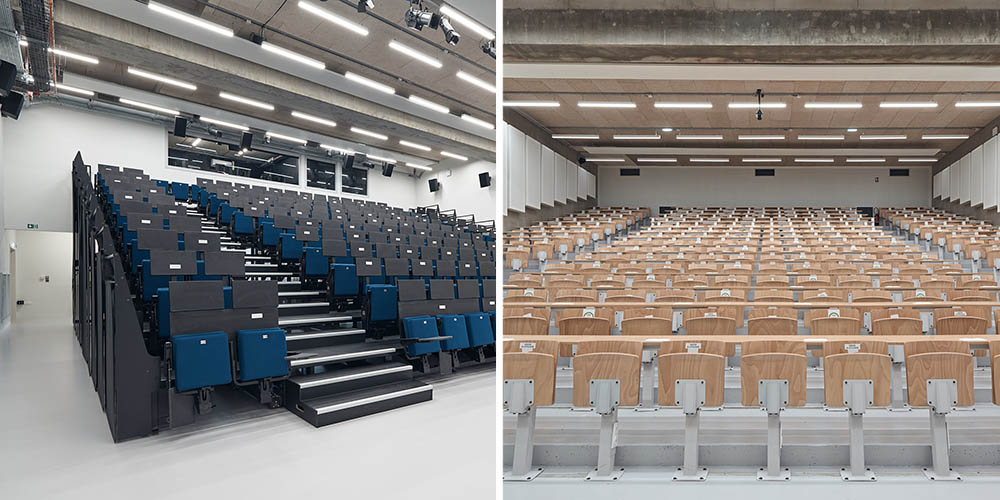
The visual continuity offered by the patio at the end of the room offers additional breathing space bringing in natural light and the ability to use this area as an outdoor exhibition space.
The control room, with the translation booths, above the seating is accessed via a circular staircase. An immersive committee room adjoins the conference room.
The documentation and multimedia centre can be transformed into a learning centre open to the public.
The double-height ceiling makes way for a two-level mezzanine offering panoramic views and different ambiances, this is where you will find the cafeteria. The entrance hall for visitors and staff links seamlessly with the central patio.
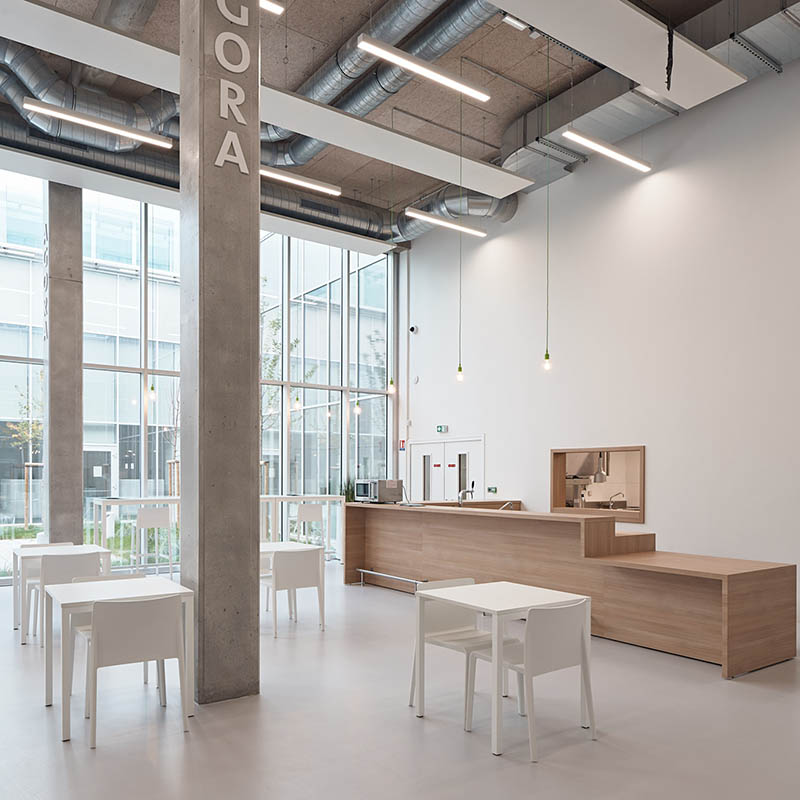
The two committee rooms for consultancy and creativity sessions enjoy the wooded atmosphere of the patio; separated by a moveable partition, they can be joined to form a single room. The auditorium, which can accommodate up to 300 people, is connected directly to the entrance hall.
The two projecting volumes have been organised around the two main functional hubs: the teaching hub and all the various classrooms and the office hubs made up of the IMTD and IIM office hub and the teacher/PhD student offices.
All of the teaching rooms are in a block above the students’ entrance hall. The multimedia rooms are mainly found on the first floor, allowing the main classrooms and tutorial rooms to be grouped together and superposed. A green roof with trees provides an area for users to walk.
A covered roof terrace can be used as a relaxation and entertainment area for staff. The IIM office hub is on the second floor, with the IMTD hub on the last floor.
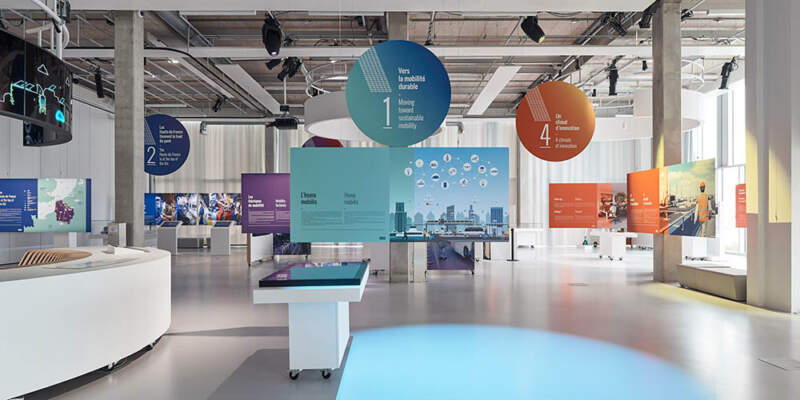
Technopôle Transalley scientific and multimedia exhibition Forum, open to students and the general public, is a flexible space that can accommodate up to 400 visitors.
The architectural glass perfectly integrate the buildings complex into the site.
With its concrete and glass double-skin façades on the two projecting volumes, it takes full advantage of free solar heating in winter and huge amounts of natural light throughout the year. It is a truly bioclimatic approach.
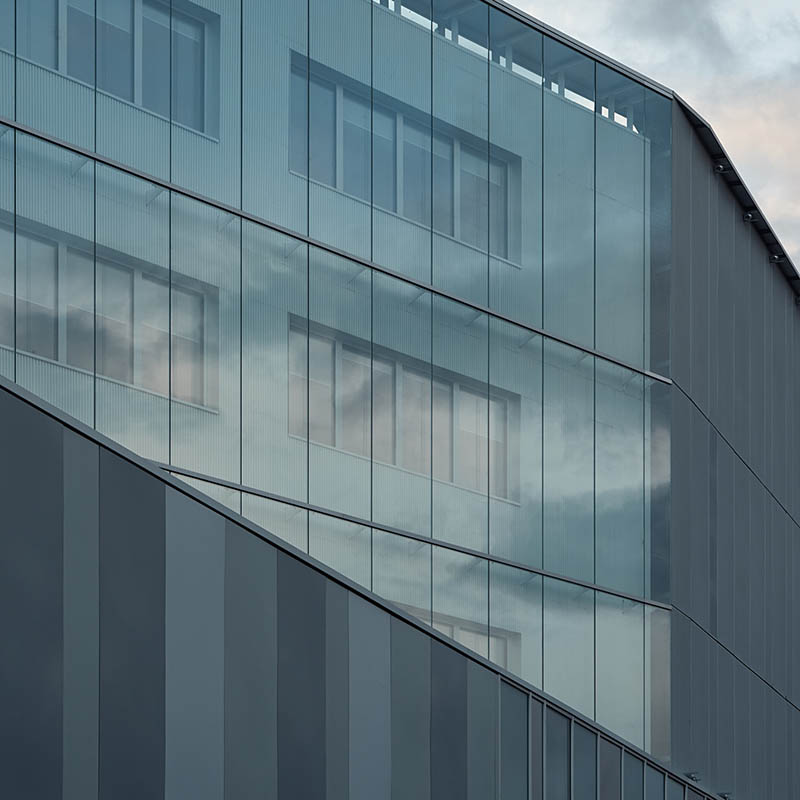
The double-skin principle of the facades allows users to take full advantage of solar gain while guaranteeing acoustic, solar protection in summer and thermal protection in winter.
Landscaped areas have been created thanks to two patios in the middle of the base and the large green roof terrace.
The latter provides an elevated promenade offering panoramic views over the campus and a demonstration and experimentation track.
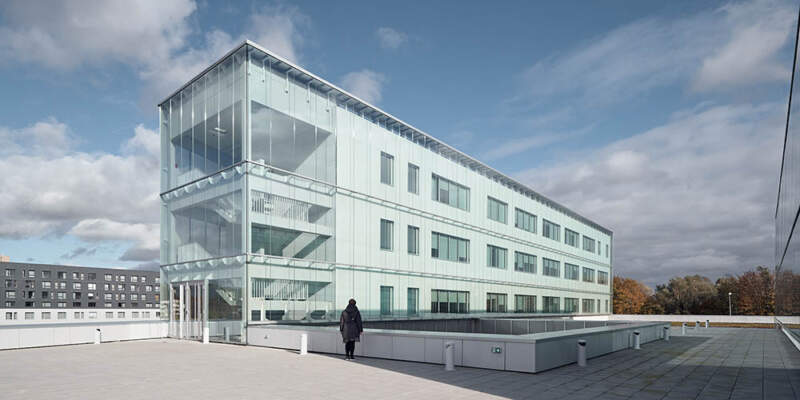
The «promenade terrace » accessible to the public.
Offices in the office hubs are separated by wooden partitions. All indoor joinery is in wood. Doors all have a lateral fixed glazed panel. The flooring is grey PVC. The IIM meeting room has laminate flooring.
The main flooring is a polished concrete slab for almost all areas open to the public. The “consultancy and creativity” committee rooms have laminate flooring. The walls are partially clad with wood for acoustic dampening. The ceiling is a metal grid allowing for easy maintenance of the technical and staging equipment.
Sustainability features
- The materials used for the building’s construction and finishes have a low environmental and health impact and are almost all bio-materials and bio-sourced materials.
- The building aims to achieve performance levels meeting the effinergie+ label with a 10% reduction in consumption.
- Rainwater is collected.
- The operations and maintenance considerations, taken into account from the outset of the operation, determined the economic quality of the building.
- The bioclimatic dimension was included from the very first sketches of the architectural design in order to optimise energy consumption and to increase the occupants’ thermal comfort: the bioclimatic potential has been fully exploited with a naturally ventilated double-skin façade on all façades.
- The double-skin creates a protective envelope that stores heat from the sun in winter and provides natural ventilation in summer thanks to pivoting panels.
- The building faces South, a layout conducive to exploiting solar energy.
- The glass façades on the base meet the requirements set out in the CPAUP (architectural, urban and landscaping specifications): a grid of 55- and 110-cm-wide modules with materials suited to the rooms’ needs: glass, frosted glass and stainless steel.
- The walls/separating partitions of the teaching rooms and office spaces are in exposed concrete with wooden wall cladding inside classrooms.
- The ceiling is also exposed concrete with radiant panels providing heating, ventilation and lighting. Acoustic management and the use of thermal inertia provide optimal comfort in the teaching and office hubs. The double skin and the solar chimneys enhance this performance.
Photography: Epaillard+Machado

